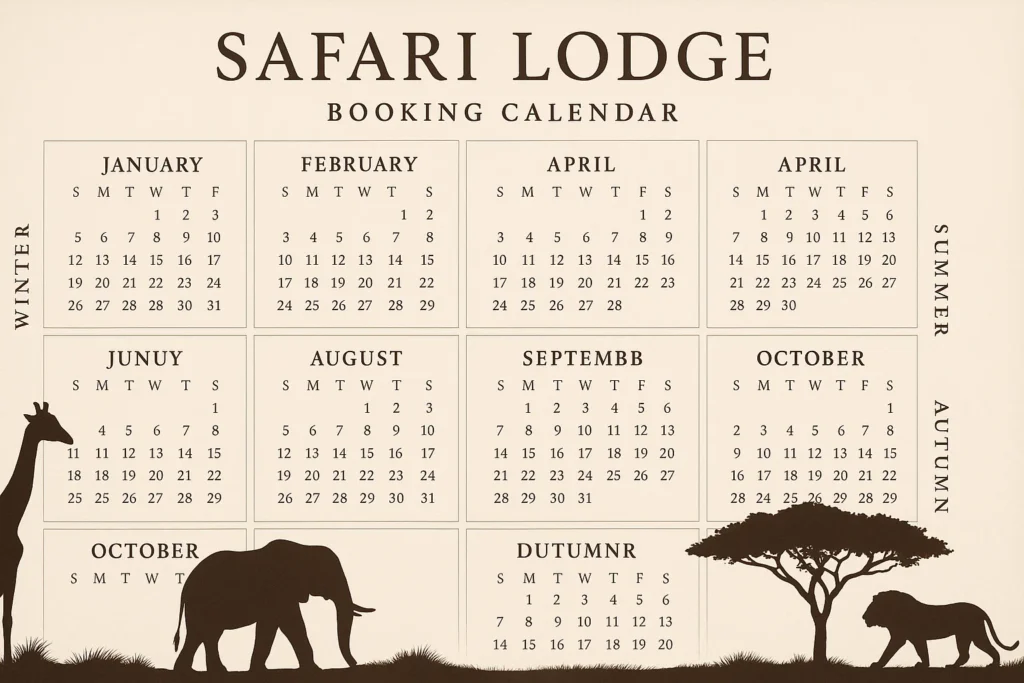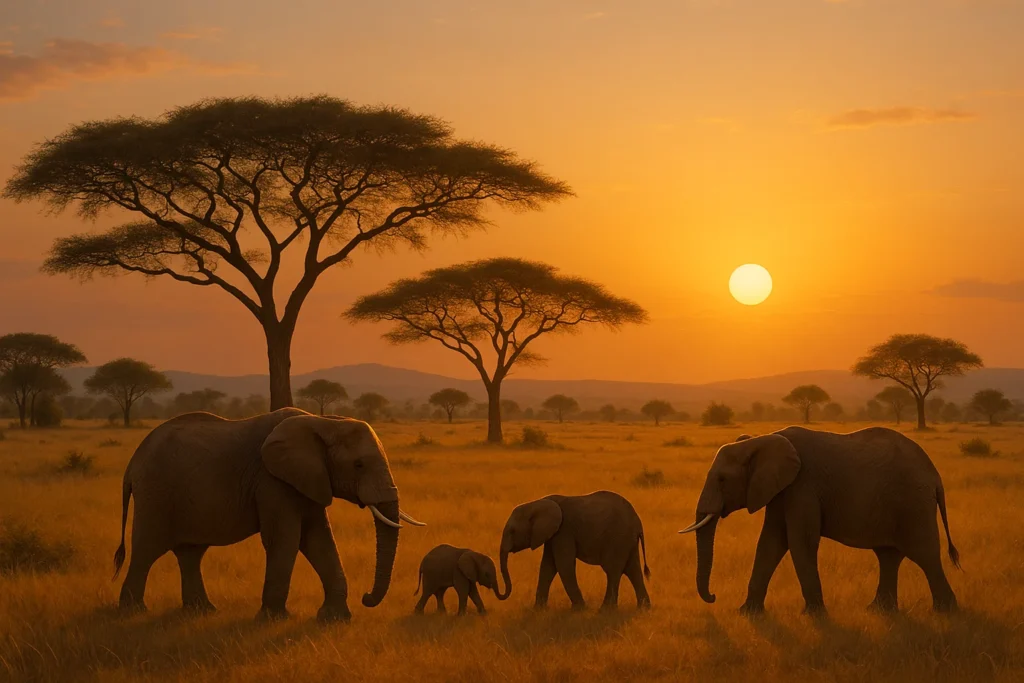Why timing matters for a family safari
Planning a safari with kids is one of the most rewarding ways to explore Africa’s wild spaces—but choosing the right time to go makes all the difference. From milder weather to better wildlife viewing and fewer travel hassles, certain months are far better suited to families. This guide breaks down the best seasons and regions for a kid-friendly safari in Africa, helping you create an unforgettable adventure for the whole family.
The ideal safari seasons for families with kids
Dry season (June to October): The safest and most comfortable option
The dry season is widely regarded as the best time for a family safari. With little to no rain, open landscapes, and thinner vegetation, animal sightings are easier and more frequent. It’s also the most comfortable time for children due to:
- Fewer insects (especially mosquitoes)
- Cooler mornings and evenings
- Predictable weather for game drives
- Easier logistics in camps and lodges
Top family-friendly destinations during this time include Kenya’s Masai Mara, Tanzania’s Serengeti, South Africa’s Madikwe, and Botswana’s Okavango Delta.
Green season (November to March): A hidden gem for older kids
While the green (or rainy) season may seem less ideal, it can be a magical time for families with older or more adventurous children:
- Landscapes are lush and vibrant
- It’s calving season for many animals—great for seeing baby wildlife
- Lodges often offer discounted rates, making it more affordable
- Fewer crowds for a more intimate experience
However, parents should be prepared for occasional downpours and higher humidity, especially in East Africa.
What to consider when choosing the right month
Age of the children
- Ages 4–7: Best during dry season for comfort and safety. Shorter drives and child-focused lodges are essential.
- Ages 8–12: More flexible—some can handle longer game drives and enjoy off-season benefits.
- Teens: Can handle adventure activities like walking safaris or canoeing in Botswana during shoulder months (May or November).
School holidays and travel planning
To align with academic schedules, families often choose June–August or December holidays. Keep in mind:
- June–August: Peak for safaris in Kenya, Tanzania, and South Africa.
- December–January: Warmer, greener, and ideal for regions like Namibia, South Africa’s Eastern Cape, or Zambia.
Tips for making a safari more kid-friendly
Choose family-oriented lodges
Look for accommodations that offer:
- Family tents or interconnecting rooms
- Kid-friendly menus and early meal times
- Activity packs or junior ranger programs
- Shorter game drives or flexible schedules
Prioritize locations with malaria-free zones
For peace of mind, especially with young children, consider malaria-free reserves such as:
- Madikwe Game Reserve (South Africa)
- Eastern Cape reserves (near Port Elizabeth)
- Waterberg region (South Africa)
These destinations eliminate the need for preventative medication, simplifying travel.
Wildlife highlights by season
| Season | What kids might see | Notes |
|---|---|---|
| June–October | Elephants, lions, giraffes, zebras, rhinos | Peak dry season; ideal for easy sightings |
| November–March | Newborn antelope, bird migrations, hippo activity | Wetter but more affordable and photogenic |
| April–May | Transitional; fewer crowds | Shoulder season perks with decent sightings |
Conclusion: Plan around your family’s needs and interests
The best time for a family safari depends on your children’s ages, interests, and your travel goals. The dry season is the safest and most popular, but the green season has its own charm—especially for families looking for value and unique experiences. With the right planning, a family safari in Africa can become a shared adventure that sparks curiosity and creates lasting memories for everyone.
FAQs
Yes, family safaris can be safe with proper planning. Choosing malaria-free reserves, booking with experienced family-friendly operators, and selecting lodges with safety features like enclosed accommodations and trained staff are key factors for a secure experience.
South Africa, Kenya, and Tanzania are top choices for first-time family safaris. They offer a range of child-friendly lodges, well-developed infrastructure, and iconic wildlife experiences suitable for all ages.
A 5- to 7-day safari is typically ideal for families. It provides enough time to enjoy wildlife without overwhelming young children. Combining safari with a beach or cultural stop can help break up the trip.
Lodges and tented camps that offer family suites, interconnecting rooms, or private villas are best for families. Look for properties with flexible schedules, children’s menus, and educational safari programs for kids.
Yes, many lodges have minimum age requirements for activities like game drives, bush walks, or canoe safaris. Restrictions vary, so it’s important to check with your lodge or tour operator when booking.
Self-drive safaris are possible in places like South Africa’s Kruger National Park, but they require careful planning. Consider your children’s patience, car safety, and your own confidence navigating wildlife areas.
Essentials include layered clothing, sunscreen, hats, binoculars, insect repellent, snacks, entertainment for downtime, and any required medications. A good camera or phone with zoom also enhances the experience for kids.






